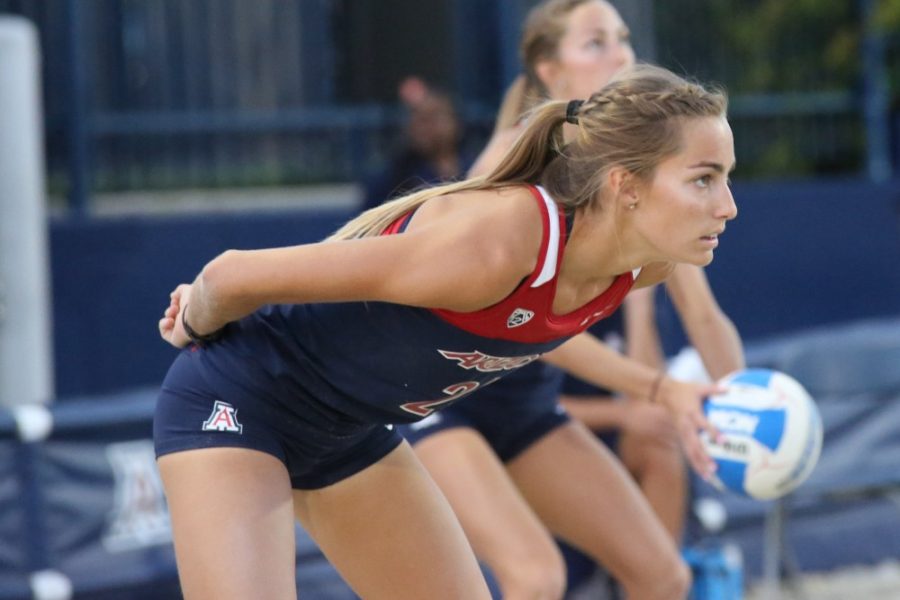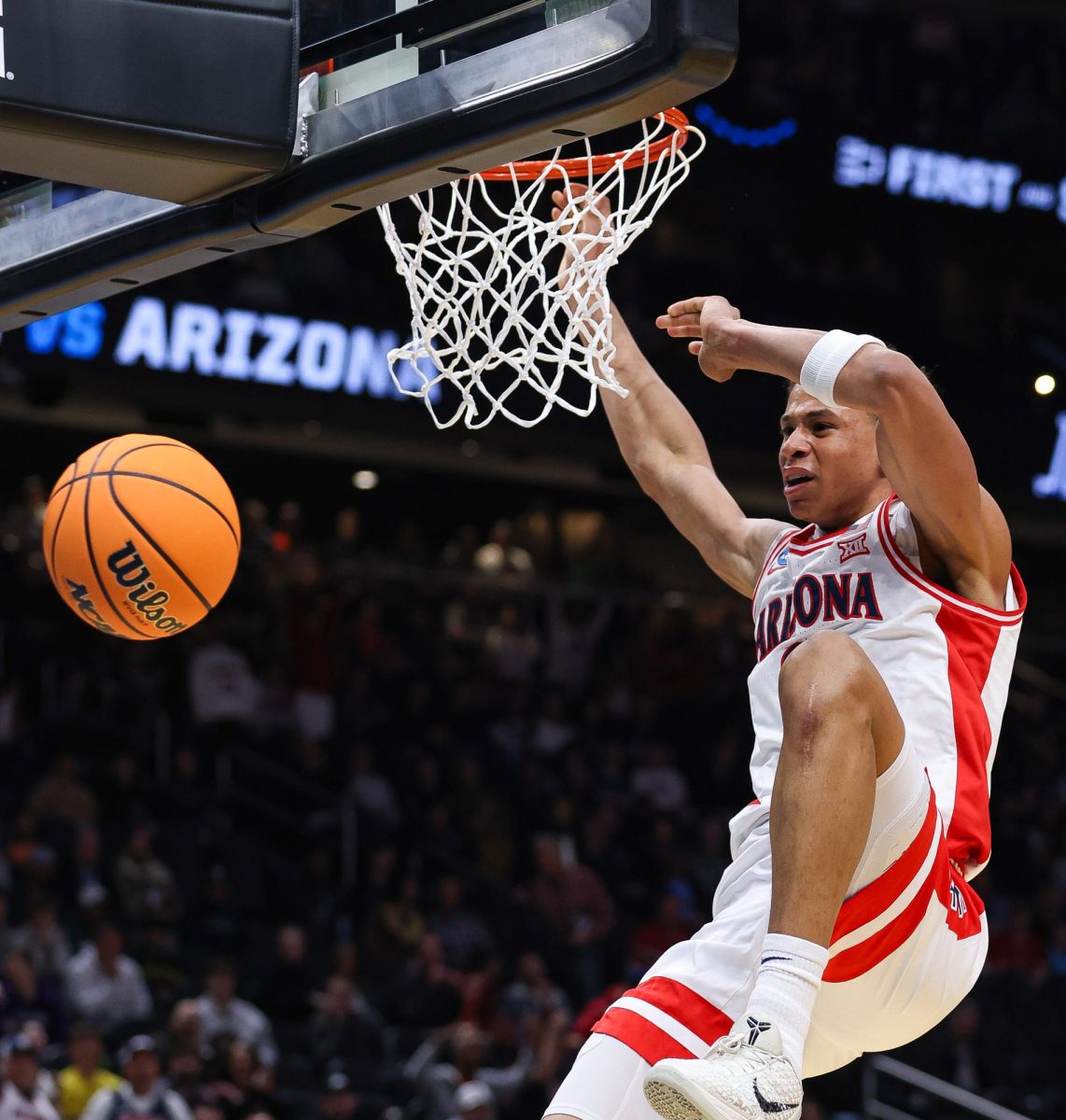As beach volleyball gears up for their upcoming season — which begins with the Cactus Classic in Tucson on Feb. 24 — the team is practicing extensively, and head coach Steve Walker is hard at work determining which players will be paired together for the season.
The very first thing Walker considers when forming pairs are the player’s positions.
“We have blockers who will cover most of the front court, we have full-time defenders — and those players will play primarily in the back court — and we have what’s called either a split-blocker or a hybrid player, and those tend to be your well-rounded players,” Walker said.
Along with position, Walker also considers each player’s athleticism. The top teams (the 1’s and 2’s) tend to have the taller players to match their opponents, as taller players have greater capability to play higher above the net than the players who play on the 4 or 5 teams.
“Now that doesn’t mean that we disqualify someone based on stature,” Walker said. “I’ve had a number of players who are full-time defenders who we wouldn’t consider lengthy or tall, but they have the athletic ability and agility to play on those teams.”
This also means that players on the 4 or 5 level teams aren’t necessarily at a lower skill level than their teammates on the 1 and 2 teams; they’re just more suited for that level of play.
When Walker creates the pairings, he isn’t just choosing which of his players will be working together — he’s also choosing who their opponents will be. How other schools are pairing up their players also plays a role in Walker’s decisions.
One of the most important factors that Walker takes into account is the chemistry between his players. He considers personality types, competitive natures and complementary skills of his possible pairings.
“I think that, without a doubt, the more that the two personalities blend off the court, the more it’s going to lead to success on the court. [The closeness of the players] can really benefit a partnership,” Walker said.
Pairing together two close friends or two players who have played together in the past is an option that Walker considers significant.
Because of the nature of college sports, Walker doesn’t have players on his team for that long, so keeping the same pairs together from year to year and season to season isn’t a reliable outcome.
“At most you’ll compete for four years … I’m considering a couple of pairs right now who have spilled a lot of sweat in the sand together. Am I going to split them up based on personnel, based on additions to the program, based on personality types? Or am I going to keep those teams together but risk our other teams possibly suffering because I’ve done that?” Walker said.
Ultimately, the pairings are a result of Walker’s beliefs of what is best for the team as a whole.
While changes to the pairings can be made mid-season, Walker prefers for his lineup to be firmly set at the beginning of the season with mid-season changes made only if neccessary.
“We definitely can shift on the fly during the year … I like having that flexibility, but going into the month of competition, I like to have my teams set for the most part,” Walker said.
Walker uses fall competitions and practice time to experiment with different pairings, so that when the competitive season arrives, he has a confident sense of who works well together.
“The trial and error in practice and in our fall competitions are the most important to me with regards to trying to figure out chemistry and partnerships,” Walker said.
While the exact pairings have yet to be decided and announced by Walker, they will be products lengthy and careful consideration.









